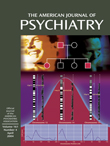To the Editor: I have several comments regarding the methods employed in the study of suicide among New York City police officers by Peter M. Marzuk, M.D., et al.
(1), as well as the interpretation of the police occupational context.
This study compared police officers with the general population of New York City. While age, gender, race, and region were statistically adjusted for, an inaccurate comparison of suicide rates may have resulted. The comparison involved a healthy and psychologically tested working group (the police) with the New York general population, which included the unemployed, institutionalized, incarcerated, and mentally ill. These population groups generally experience higher suicide rates. Thus, the study compared a New York population containing segments that have high suicide rates with the police, who should have relatively low suicide rates. Even if this study were accurate, the fact that police officers have suicide rates equal to those of the New York population demonstrates that suicide is a problem.
The work exposures involved in policing are confounders that add considerable weight to an analysis of suicide. Incidents such as witnessing death, encountering abused children, and street combat weigh heavily as precipitants to depression, alcohol use, and suicide. The study may have better compared the police with an occupation similar in confounder weight distributions, in addition to including such confounders in the analysis to assess their impact.
While psychological testing is an important screening tool for bringing in officers suitable for police work, it does not tell the whole story. Exposure and job socialization in policing have profound impacts on officers. It was interesting that the mean age of suicide for police officers in this study was 33.5 years, an age much younger than the national norm for suicide. It was also interesting that police suicide rates were noticeably unstable, while population rates remained stable over the 20-year period. The high police suicide rate in 1994, for example, occurred during a time of citywide internal investigations into a police drug scandal.
Some researchers have stated that occupation is not on the list of suicide risk factors. While we cannot yet be certain that police work by itself is a suicide risk factor, we can state that it serves as a fertile arena for suicide precipitants, including relationship problems, culturally approved alcohol use, firearms availability, and exposure to psychologically adverse incidents. This job is part of the causal chain of suicide.
In sum, this study reflects statistics that tell us that we need to look deeper into police suicides and their root causes. While statistics such as rates per 100,000 tell us about numbers, they do not tell us about suicide risk. We may be better informed if we know the inherent risk of police suicide in both a quantitative and a contextual sense. Policing is a psychologically dangerous occupation. We still have a way to go with police suicide research, but I remain with the premise that police are at a significantly higher risk for suicide.

